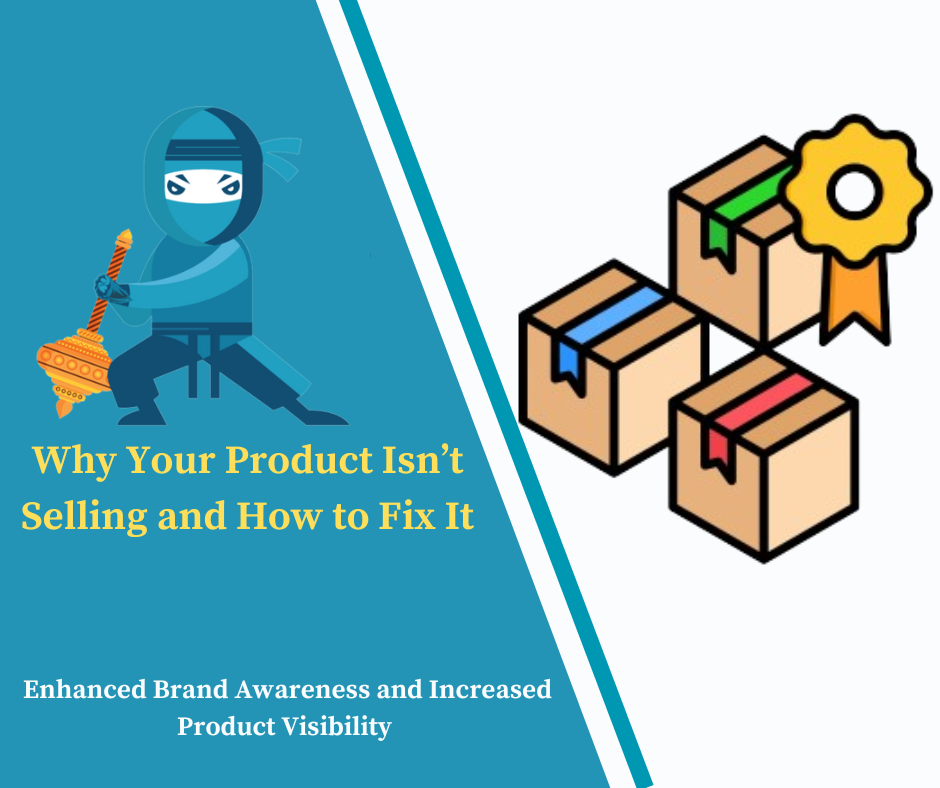Why Your Product Isn’t Selling and How to Fix It
In the competitive landscape of modern business, it’s not uncommon to encounter the frustrating reality of a Product Isn’t Selling. Whether launching a new product or managing an existing one, poor sales performance can be a significant setback. Understanding why your product isn’t resonating with customers is the first step toward resolving the issue and turning your sales figures around. In this article, we will delve into common reasons behind stagnant sales and offer actionable strategies to address these challenges. Identifying the root causes and implementing effective solutions can transform your product’s market performance and drive higher sales.
When a product isn’t selling, it can stem from various underlying issues. From insufficient market research to ineffective marketing strategies, numerous factors can contribute to low sales performance. This article will explore these common pitfalls in detail:
What is a Product?
A product is a tangible or intangible item created to satisfy the needs or desires of consumers. It can range from physical goods to services, digital offerings, experiences, and even abstract ideas. Understanding what constitutes a product involves examining its various forms, features, and roles in the market.
Types of Products
1. Physical Products:
Consumer Goods: These are tangible items bought by individuals for personal use, such as clothing, electronics, and groceries.
Durable Goods: Products designed for long-term use, like cars and appliances.
Non-Durable Goods: Items consumed quickly or with a short lifespan, such as food and toiletries.
2. Services:
Intangible Offerings: Activities or benefits provided to consumers, like consulting, education, or repair services, that do not have a physical form but deliver value through expertise or effort.
3. Digital Products:
Software: Applications and programs for computers or mobile devices.
Content: Digital items like eBooks, online courses, and media that can be downloaded or accessed online.
4. Experiences:
Events: Access to live events such as concerts or sports games.
Activities: Engaging experiences like guided tours or adventure activities that provide value through participation.
5. Ideas:
Concepts: Innovations or new business models that address problems or fulfill needs, such as social initiatives or groundbreaking technologies.
Key Elements of a Product
1. Features and Attributes:
Functionality: The specific capabilities and uses of the product.
Design: The visual and ergonomic aspects that contribute to user experience.
2. Benefits:
Customer Value: The advantages and value provided to the consumer, which may include problem-solving, convenience, or enhanced lifestyle.
3. Branding:
Identity: The brand name, logo, and image that help distinguish the product from competitors and build consumer loyalty.
4. Pricing:
Cost: The amount consumers pay for the product, influencing its perceived value and market demand.
5. Distribution:
Availability: The channels through which the product is sold or delivered, such as retail stores, online platforms, or direct sales.
6. Quality:
Standards: The level of excellence or reliability that affects customer satisfaction and brand reputation.
Product Lifecycle
1. Introduction:
Launch: The product is introduced to the market, with efforts focused on building awareness and generating initial sales.
2. Growth:
Expansion: Sales increase as the product gains market acceptance. Strategies focus on differentiation and expanding reach.
3. Maturity:
Stability: Sales growth stabilizes as the product reaches peak market saturation. Efforts concentrate on maintaining market share and optimizing profits.
4. Decline:
Reduction: Sales decline due to market saturation, competition, or changing preferences. Strategies may involve discontinuation, modification, or revitalization.
Understanding Why Your Product Isn’t Selling
1. Lack of Market Research
Issue: One of the most common reasons a product isn’t selling is that it doesn’t meet the needs or desires of your target market. Without thorough market research, you might create something with little to no demand.
Solution: Conduct comprehensive market research to understand your audience’s preferences, needs, and pain points. Use surveys, focus groups, and competitor analysis to gather valuable insights.
2. Inadequate Product Differentiation
Issue: If your product doesn’t stand out from the competition, it’s likely to be overlooked by potential customers. A lack of unique selling points can lead to low sales.
Solution: Identify what makes your product unique and emphasize these features in your marketing strategy. Consider refining your product or packaging to better differentiate it from competitors.
3. Poor Pricing Strategy
Issue: Pricing plays a significant role in sales performance. If your product is too expensive or too cheap, it might not attract the right customers or could impact perceived value.
Solution: Review your pricing strategy to ensure it aligns with the perceived value of your product and the buying power of your target audience. Conduct a competitive pricing analysis and consider adjusting your pricing structure if necessary.
4. Ineffective Marketing and Promotion
Issue: Even the best product will struggle to sell without effective marketing and promotion. If your target audience isn’t aware of your product or isn’t convinced of its value, sales will suffer.
Solution: Develop a robust marketing plan that includes digital marketing, social media, email campaigns, and other promotional activities. Focus on creating compelling content that highlights your product’s benefits and reaches your target audience effectively.
5. Poor Customer Experience
Issue: A negative customer experience can deter potential buyers and result in poor sales. Issues such as complicated purchasing processes, inadequate customer support, or product quality concerns can all contribute to a decline in sales.
Solution: Improve the overall customer experience by streamlining the purchasing process, offering excellent customer service, and ensuring high product quality. Collect feedback from customers to identify and address any pain points.
6. Inadequate Distribution Channels
Issue: If your product isn’t available where your target audience shops, you might miss out on potential sales. Limited distribution channels can restrict your product’s reach.
Solution: Expand your distribution channels by exploring online platforms, retail partnerships, or direct sales opportunities. Ensure that your product is accessible to potential customers through multiple convenient channels.
Also read: How to Boost Product Sales Conversion Rate Optimization Tips
Fixing the Issues
1. Revise Your Market Research: Continuously update your market research to stay informed about changes in customer preferences and market trends. Use this information to adapt your product and marketing strategies accordingly.
2. Enhance Product Differentiation: Invest in innovation and design to make your product stand out. Highlight unique features and benefits in your marketing efforts to create a compelling value proposition.
3. Adjust Pricing: Regularly review and adjust your pricing based on market conditions, production costs, and customer feedback. Offer promotions or discounts strategically to boost sales.
4. Boost Marketing Efforts: Increase your marketing budget if necessary, and explore new marketing channels. Focus on creating engaging content and building a strong online presence to attract and retain customers.
5. Improve Customer Experience: Implement changes based on customer feedback and strive to exceed customer expectations. Offer easy returns, responsive support, and a user-friendly purchasing process.
6. Expand Distribution: Research and test new distribution channels to broaden your product’s reach. Consider partnerships or collaborations that can help you access new customer segments.
FAQ
How can I determine if my market research is lacking?
Evaluate the depth and relevance of your market research. If it doesn’t provide actionable insights or doesn’t align with current market trends, it may need to be updated or expanded.
What are some effective ways to differentiate my product?
Focus on unique features, superior quality, or innovative design. Highlight these aspects in your marketing materials and consider creating a compelling brand story.
How do I set the right price for my product?
Analyze your costs, competitors’ pricing, and customer perceptions of value. Conduct pricing experiments and gather feedback to find a balance that meets customer expectations and supports your business goals.
What marketing strategies work best for boosting sales?
Use a mix of digital marketing, social media, content marketing, and email campaigns. Tailor your strategies to your target audience and track performance to optimize your approach.
How can I improve the customer experience?
Streamline the purchasing process, offer responsive support, and ensure product quality. Collect and act on customer feedback to continually enhance their experience.
Conclusion
Navigating the complexities of why your product isn’t selling can be challenging, but it’s a critical step toward achieving business success. By systematically analyzing and addressing the factors contributing to poor sales performance, you can identify effective solutions and rejuvenate your product’s market potential. Whether it’s refining your market research, enhancing product differentiation, adjusting pricing strategies, improving marketing efforts, or optimizing customer experience and distribution channels, each area offers opportunities for improvement.








